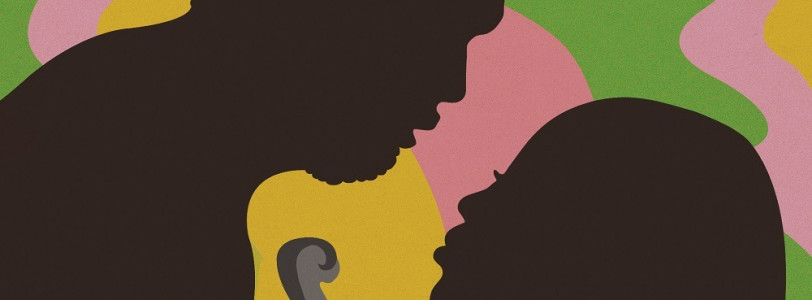Ganja and Hess was a project Bill Gunn was reluctant to take on. Contacted by a studio looking to cash in on the Blaxploitation era of films that took place in the late 60s and early 70s, Gunn was initially unwilling to contribute to what he understandably saw as a limiting and racially offensive period of cinema. They wanted him to direct a Black vampire movie in the same vein as the extremely successful Blaxploitation movie, Blacula (1972). By all accounts it was a tough decision for Gunn, who had begun his media career writing critically acclaimed plays and had previously won an Emmy for his teleplay, Johnnas. However, as someone with an intense passion for directing, he was aware of how rare filmmaking opportunities were for Black creatives in an industry that was often overtly antagonistic towards them.
This knowledge prompted him to accept the offer. His reservations led him to seek full creative control, in an interview he gave to a magazine at the time, he recalled:
"Kelly Jordan called me in to write a film; he said don't be embarrassed because it's a horror film. The first Black horror film; it's going to be dynamic; it's going to be fabulous, and I'm embarrassed to say it to you. And I started to say, you should be, so he invited me to write it."
Pushing for creative control allowed Gunn to take a very personal and experimental approach to the horror film.
The film's plot is relatively simple. It follows a Black anthropologist named Dr Hess Green (Duane Jones) uncovering an ancient Myrthian (fictional African civilisation) ceremonial dagger, which is used to kill him by his assistant. This transforms Dr Green, turning him into a vampire that must consume fresh blood to survive. After finding his assistant dead by suicide, he drains his blood and ponders over his new situation in his mansion. The assistant's wife — Ganja Meda (Marlene Clark) — shows up looking for her husband and is upset upon finding his corpse, but is then convinced by Dr Green to marry him and become a vampire. They spend some time taking part in classical vampiric traditions, until Dr Green loses his taste for the lifestyle, pondering the state of his soul and eventually asking his chauffeur, Reverend Luther Williams (Sam Waymon) to take him to church. After returning home he kills himself by standing before a cross. Meda mourns him, but decides to carry on with her life, her fate left ambiguous.
I did say relatively simple.
What defines the film is its themes. Isolation, ambition, and cultural identity. The crux of the story comes from the allegorical link between vampirism and addiction. Mood and atmosphere drive the majority of the scenes. There is a surreal echo to the internal dialogue of the characters, one that gives their emotional and logical processes an elusivity that builds on the foreboding tone; the audience is given snatches of understanding but are ultimately left with a picture they cannot fully process. Visually, the film is desaturated of colour, giving it a misty, dreamlike quality. There was no doubt upon viewing the film that it belonged to the arthouse genre.
The studio pushed back hard against this direction, demanding Gunn toned down the artistic nature of the movie and shoehorn in more commercially viable features. This demand was entirely ignored by Gunn, who decided he cared far more about creating his artistic vision than he did about making money.
Gunn's protagonist was unusual for a Blaxploitation film. He wanted to subvert racist assumptions by presenting Dr Green as a rich intellectual. Black characters were almost always portrayed as blatant racial caricatures, Dr Green went against that trope. This was one of the many aspects of his film the studio objected to, but eventually, they gave up trying to harass him and essentially wrote the film off as a bad investment.
Ganja and Hess provided a lot of firsts for Black American filmmaking. Its director of photography, James E. Hinton, was the first Black Director of Photography ever hired in North America. The film itself was one of the first instances of a Black director having full creative control, and whilst it was not initially successful, mainly due to the fact that it was primarily shown in places that prohibited or discouraged Black audiences, Gunn was met with acclaim when he took it to the Cannes Film Festival.
Ganja and Hess has been recut many times, usually by studios trying to make it more exploitable. With names like Blood Couple, Double Possession, and Black Vampire, these edits had zero of the artistic appeal that has allowed Ganja and Hess to stand the tests of time. Knowing how easily his work could be buried, Gunn gave the original cut to The Museum of Modern Art. Numerous screenings have taken place since then, and its legacy continues to grow to this day.
For those interested in finding out more about Gunn and the artistic concerns behind Ganja and Hess I would highly recommend reading this interview with him.









0 Comments